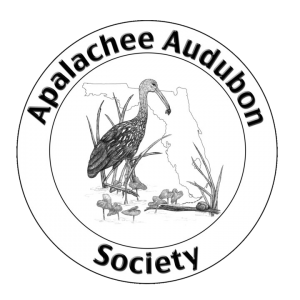
The Refuge Partners with the Army Corps of Engineers on the Upper Mississippi River Restoration Environmental Management Program (UMRR)
The UMRR Program was the first environmental restoration and monitoring program undertaken on a large river system in the United States. Since its creation, UMRR has come to be recognized as the single most important effort committed to ensuring the viability and vitality of the UMRS' diverse and significant fish and wildlife resources since establishment of the National Wildlife Refuges on that system in the 1920s.
This systemic program provides a well-balanced combination of habitat restoration activities, along with monitoring and research. UMRR has pioneered many new and innovative engineering and planning techniques for ecosystem restoration in large river systems. In addition, the science element of the UMRR has developed state-of-the-art techniques to monitor and conduct research on the river. Scientific monitoring, engineering design and environmental modeling techniques have been shared throughout the United States and in more than five countries.
The UMRR Program has a partnership of unparalleled dimensions between a multitude of federal and state agencies, non-governmental organizations and the general public. The total annual value of these partnership contributions to the UMRR Program averages $1,000,000.
Over the past 33 years, the program has completed several major initiatives including four Reports to Congress, two Habitat Needs Assessments (2000 & 2018), two Status and Trends Reports, two Habitat Restoration Design Manuals, a UMRR Program Strategic and Operational Plan, two UMRR Long Term Resource Monitoring element Strategic Plans, and developed an explicit approach to Adaptive Management.
History
Since 1986, the UMRR Program has completed 56 habitat projects that improved critical fish and wildlife habitat on 106,000 acres in Illinois, Iowa, Minnesota, Missouri and Wisconsin. From 2005 to 2015, UMRR projects benefited nearly 35,000 acres of habitat - nearly 50% of all habitat reported by the Corps nationally. The UMRR Program has 22 additional projects in various stages of construction and design. These projects will benefit another 65,000 acres of habitat when implemented. The UMRR Program fulfills the direction of Congress to manage the UMRS as a nationally significant ecosystem. Other Corps programs address the navigation system.
The UMRR Program addresses long term stressors to the UMRS, such as sedimentation, increased water tables due to maintaining navigation pools during low flows and continues to effectively respond to new stressors on the UMRS, such as invasive carps. Without the UMRR Program, the Upper Mississippi River ecosystem will degrade at an accelerated rate and the progress that has been made to preserve this national treasure for future generations will be lost.
Why the Upper Mississippi River System Matters
The Upper Mississippi River System (UMRS) is one of this nation’s unique natural resources. The UMRS is one of a small number of large river floodplain ecosystems still characterized by annual flood pulses that advance and retreat over the floodplain and temporarily expand backwaters and floodplain lakes. The UMRS floodplain ecosystem provides habitat for a wide array of fish and wildlife species distributed among a complex arrangement of flowing channels, floodplain lakes, backwaters, wetlands, and floodplain forests. The river supports a diverse mussel fauna, contains more than 25 percent of North America’s freshwater fish species, and is an internationally recognized flyway for migrating birds.
The UMRS is significant because it provides simultaneous value historically, culturally, ecologically, and economically. It is historically significant because of its prominence in our country’s development, its use by Native Americans and European settlers. It is culturally significant as it is part of our American identity; woven into American song lyrics and literature. It is ecologically significant as it supports a complex web of life supported by the diverse and varied habitats. It is economically significant as it provides jobs through commercial navigation, commercial fisheries, and a robust tourism industry; it also provides power supply and drinking water to some communities.
Capoli Slough Habitat Rehabilitation Project
One great example of a successful project is The Capoli Slough Habitat Rehabilitation Project which is located in the 2,000-acre Capoli Slough backwater across from Ferryville, WI, and approximately five miles below Lansing, IA. The site lies within the Upper Mississippi River National Wildlife and Fish Refuge in Crawford County, Wisconsin.
Since the creation of Lock and Dam No. 9 in 1937, several of the natural islands in this area eroded and disappeared. Island loss allows more wind and wave action in the backwaters, keeping sediment suspended (turbidity). The suspended sediment in turn makes it difficult for sunlight to penetrate the water and reach aquatic plants. This has resulted in the loss of valuable aquatic plant beds that migrating waterfowl and fish use for food and cover.
The completed Capoli Slough Islands project includes eleven new islands, a riffle (rock lined) channel, and emergent wetlands. The islands were built using material dredged from the main channel and from within the Capoli Slough area backwaters. To prevent the new islands from eroding, rock was placed along sections of shoreline and vegetation was planted. The islands help protect and enhance existing islands and aquatic vegetation. The backwater dredging created deeper holes for fish. The riffle channel created habitat for fish and mussels. Migratory waterfowl, shorebirds, turtles, frogs, fish, mussels, beaver, mink, and otter are using the area for homes, food and resting areas.
Partner Category
Other Partners
Here are just a few of our National Partners. You can view the full list of FWS partners, along with the regions and areas of focus our work together entails.
Partnership Services
Through our partnerships we are able to expand our capabilities through the inclusion of services in areas such as:
- Grant opportunities
- Sponsorship of grants
- Cooperative Agreements
To find out more about how our partner provides services view our partner services below.

